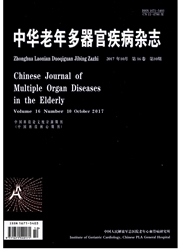

 中文摘要:
中文摘要:
随着科学技术及医学的进步和发展,人口老龄化已成为当今社会面临的重要问题,预计到2030年,≥65岁的老年人口将达到目前人数的2倍,且与年龄相关疾病的发生率将随之升高。由于老龄化与发生肾脏疾病的风险相关,因此研究肾脏衰老相关机制,对于降低老年肾脏病发生率、延缓老年肾脏病发展有重要意义,同时也可减轻家庭、社会经济负担。本文旨在回顾既往发表文献,总结肾脏衰老的可能分子机制。
 英文摘要:
英文摘要:
With the progress and development of science and technology, as well as medicine, aging population has become an important issue facing our society currently. It is estimated that by the year of 2030, the population 65 years and over will get nearly doubled, and the incidences of age-associated diseases will increase in parallel. As aging is associated with the risk of kidney diseases, it is of significance to study the mechanisms of renal aging in order to reduce the occurrence and delay the progression of senile kidney diseases, and reduce the economic burden at household and community levels at the same time. We aimed to review the published literature to sum up the possible molecular mechanisms of renal aging.
 同期刊论文项目
同期刊论文项目
 同项目期刊论文
同项目期刊论文
 期刊信息
期刊信息
